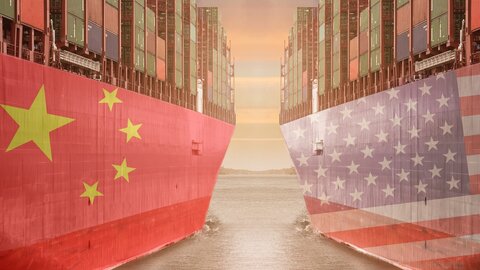To hear Washington’s hawks tell it—including many in the Trump administration—trade with China jeopardizes domestic manufacturing and, worse still, US national security. A rational response to such fears would be to eliminate trade barriers with a number of Asia-Pacific trading partners. Yet the administration’s trade policy continues to undercut that goal in the quixotic belief that the US can and should reshore large swaths of production.
In yet another fit of uncertainty-inducing protectionism, President Trump announced the United States will impose a host of new tariffs on 22 countries (at last count) unless they can reach trade agreements with the US by August 1, 2025.
The measures include a 25 percent effective tariff on close allies Japan and South Korea, as well as steep rates on key Association of Southeast Asian Nations (ASEAN) members Cambodia (36 percent), Malaysia (25 percent), Indonesia (32 percent), Laos (40 percent), and Thailand (36 percent). And the tariffs could go higher still. The administration warned Japan and South Korea that “if for any reason you choose to raise your tariffs, then whatever number you choose to raise them by will be added onto the 25 percent we charge,” adding that “goods transshipped to evade a higher tariff will be subject to that higher tariff.”
As China deepens its economic foothold across Asia, bolstering US trade and investment ties with Japan, South Korea, and ASEAN nations—which collectively accounted for 13.95 percent of US imports in 2024—is crucial to sustaining its regional influence. Yet the administration’s tariff threats strain ties with these partners, heightening the risk that they drift closer to China’s economic orbit. The risk is especially pronounced given that China has free trade agreements (FTAs) with South Korea, Japan, Indonesia, Cambodia, Malaysia, Laos, and Thailand through the Regional Comprehensive Economic Partnership (RCEP) trade deal.
While the US sends threats, China has been offering market access. This contrasting approach appears to be paying dividends for Beijing.
Writing in Foreign Affairs recently, Singapore-based professors Yuen Foong Khong and Joseph Chinyong Liow observed that many ASEAN members may already be drifting towards China despite the organization’s insistence on non-alignment. Their Anatomy of Choice Alignment Index (which uses twenty indicators split into five domains to situate ten Southeast Asian countries on a spectrum of alignment between the United States and China) on a spectrum of alignment between [China] and the US, based on twenty indicators (split into five domains), across a timeframe of thirty years, shows that rising US protectionism since 2017 has nudged even successful hedgers like Indonesia, Malaysia, and Thailand closer to China.
Since Trump’s Liberation Day tariffs, China has intensified efforts to deepen its economic integration with ASEAN. In late April, President Xi Jinping went on a three-nation tour to Malaysia, Vietnam, and Cambodia to boost ties with neighbors affected by escalating trade tensions. He signed trade agreements with Malaysian President Anwar Ibrahim, who said that China remained its most significant trade partner and a “rational, strong, and reliable” ally in the face of global trade uncertainties. On May 21, Beijing completed negotiations on its Version 3.0 China-ASEAN Free Trade Area (CAFTA), updating the FTA to include digital and “green” trade.
President Trump, meanwhile, insists his tariff policy is about reciprocity, declaring earlier this year that “Whatever they tariff us, we will tariff them.” But such rhetoric is sharply at odds with the administration’s actions. South Korea now faces a 25 percent tariff despite having an effective tariff rate on US goods of only 0.79 percent, largely thanks to the US-Korea Free Trade Agreement (KORUS) that eliminated tariffs on 95 percent of trade.
It’s difficult to understand how Trump’s threatened 25 percent tariff response to Korea’s near-zero preferential rate is in any way reciprocal, or what value a new deal could offer beyond the one already in place. Furthermore, Trump already renegotiated KORUS in 2019, granting South Korea an exemption from Section 232 tariffs in exchange for capping steel exports and making minor adjustments to drug pricing, US auto standards, and customs procedures.
What is clear, however, is that violating KORUS would undermine America’s credibility as a partner in its own free trade agreements.
And this shattering of American credibility goes beyond South Korea.
After President Trump announced his “Liberation Day” tariffs in early April, Japan quickly made known its interest in reaching a deal with the United States, and Prime Minister Shigeru Ishiba’s envoy made seven trips to Washington for talks. The reward for its efforts? An insulting 1‑point increase in pending tariffs.
Prime Minister Ishiba called this latest announcement “truly regrettable”—perhaps putting it mildly—and pointed out that Japan had pursued “earnest and sincere discussions” with the US. Chipping away at goodwill with America’s largest foreign investor and key ally in the Indo-Pacific is a deeply shortsighted move that rocks the boat within an alliance that has long been remarkably strong.
Japan and South Korea may not shift politically toward China, but the risk of them being drawn into deeper economic ties with Beijing should raise alarm bells among Washington’s China hawks. In May, the three countries met for their first trilateral summit in four years, underscoring a shared urgency to hedge against escalating US protectionism.
While Beijing courts its ASEAN neighbors, Washington threatens to upend their export-driven economies unless they strike one-sided “deals” with the US. ASEAN may share Washington’s concerns about China’s economic practices, but opportunities for increased cooperation with the bloc are likely to go begging so long as the United States under Trump is perceived as a unilateral and unpredictable partner.
Instead of pursuing sound policy that reaffirms stable economic ties with allies and taking steps to expand trade and engender goodwill from ASEAN, the Trump administration has opted for trade brinkmanship. America’s loss is likely to prove China’s gain. The costs of Washington’s misguided trade policy extend well beyond economics.
Cato Institute intern Saamiya Laroia contributed to the research and writing of this blog post.

